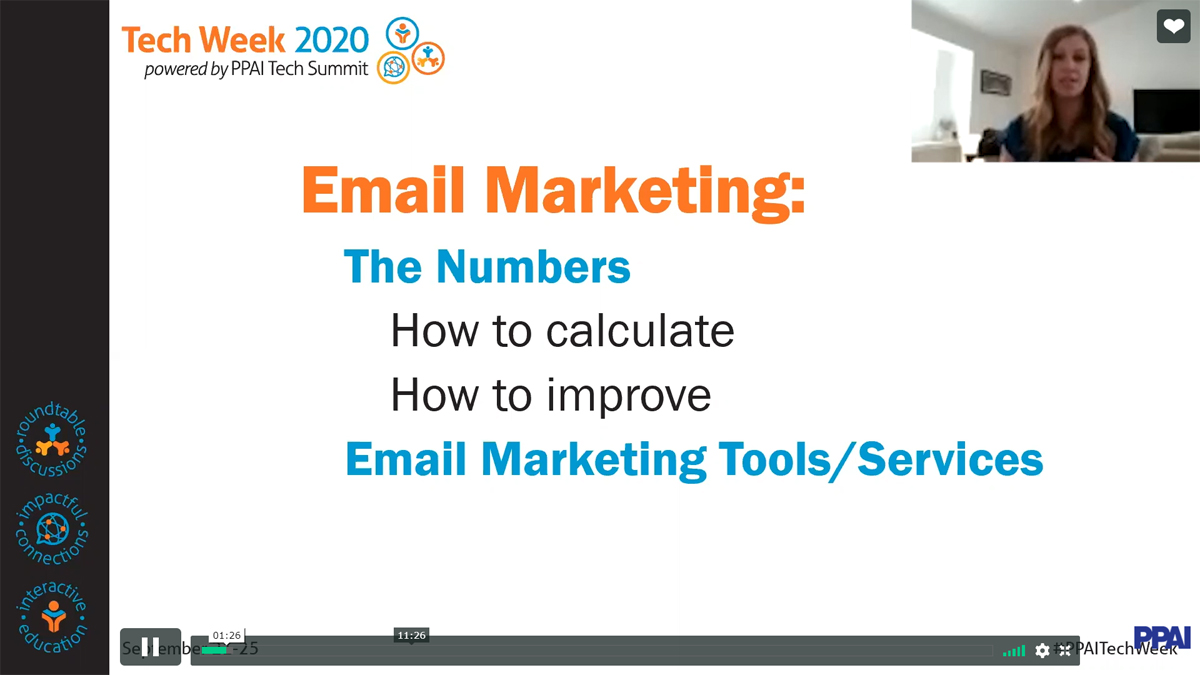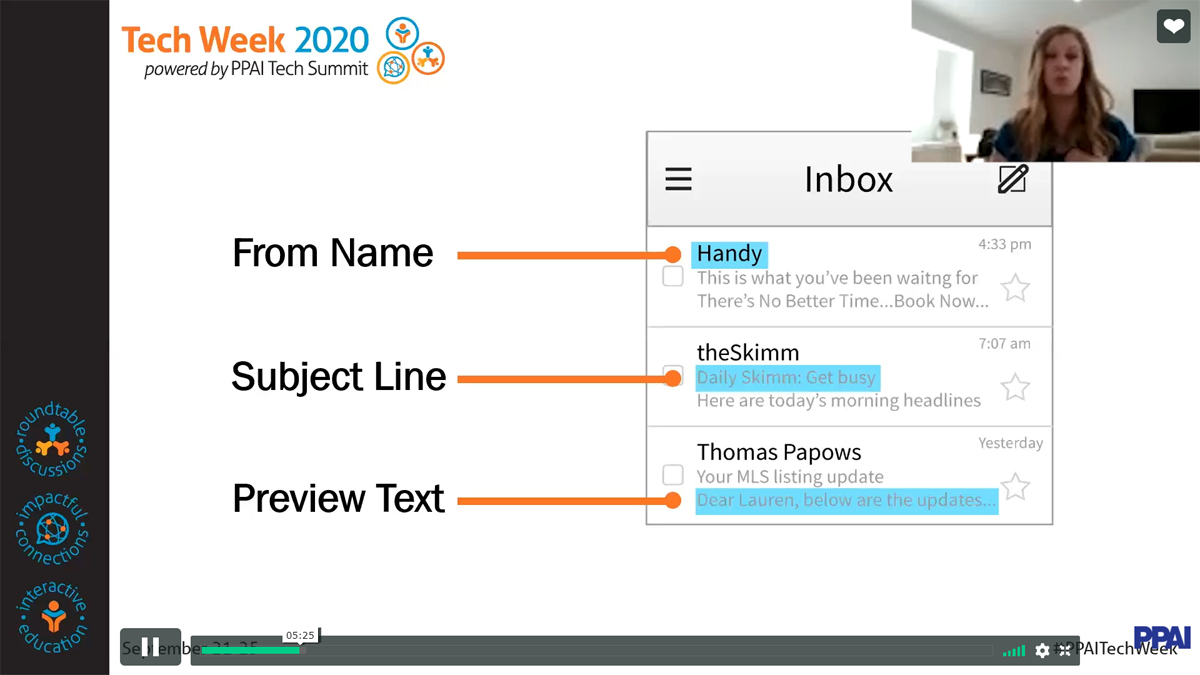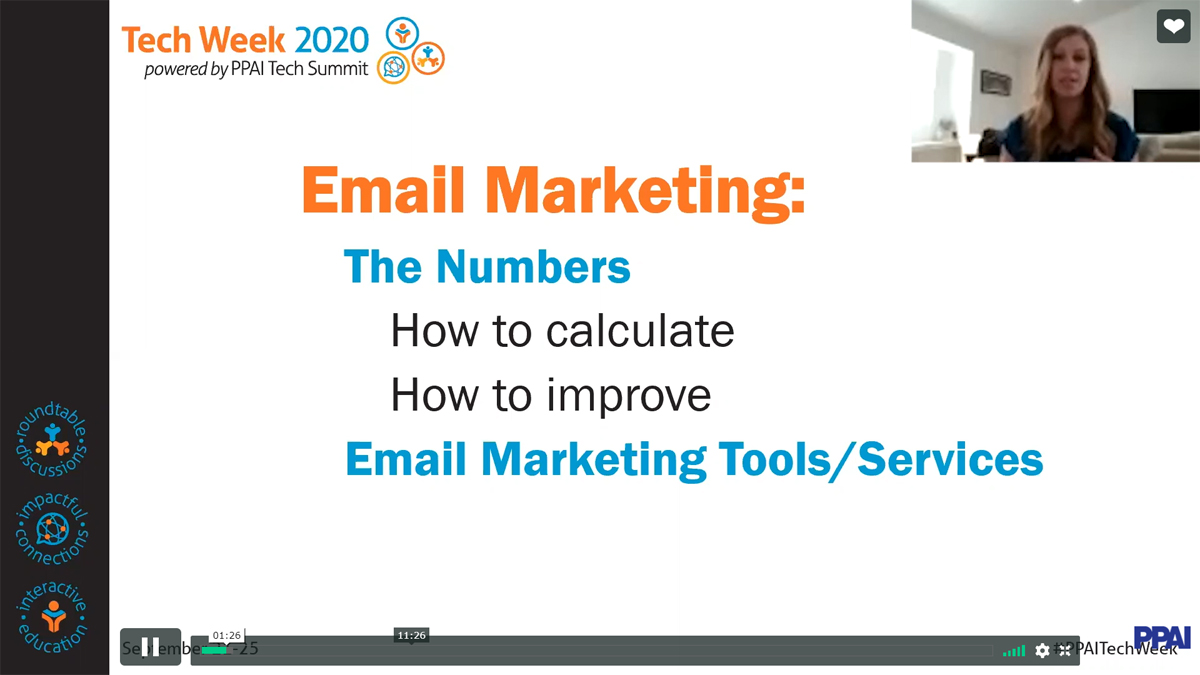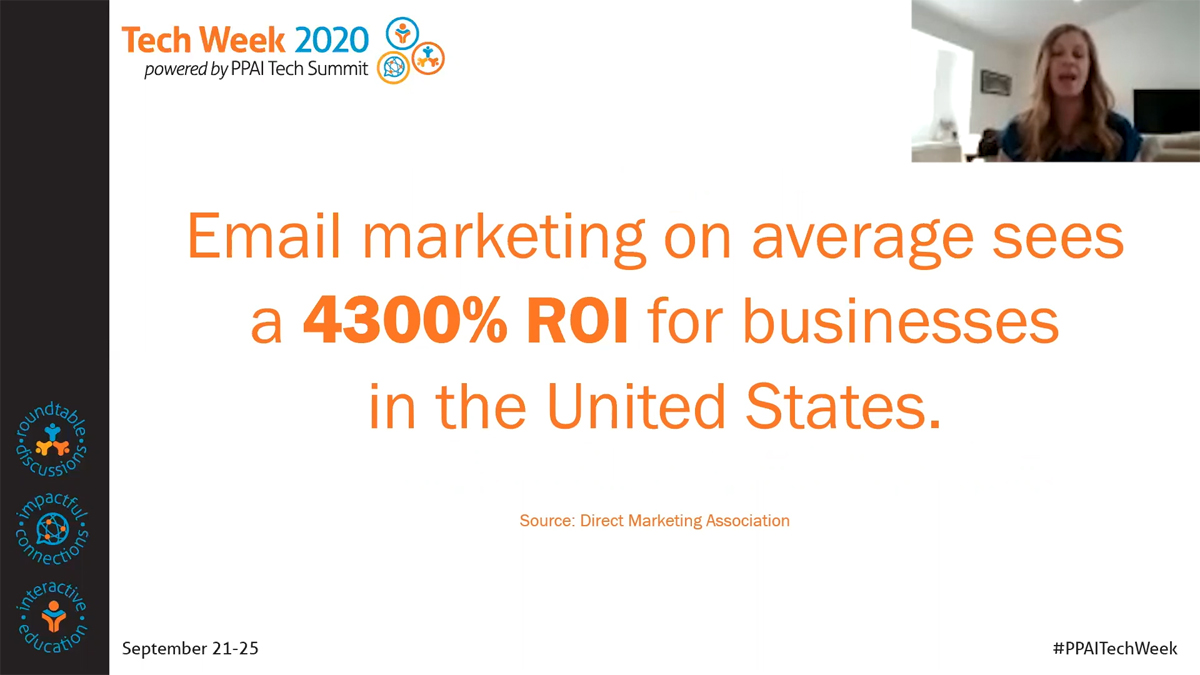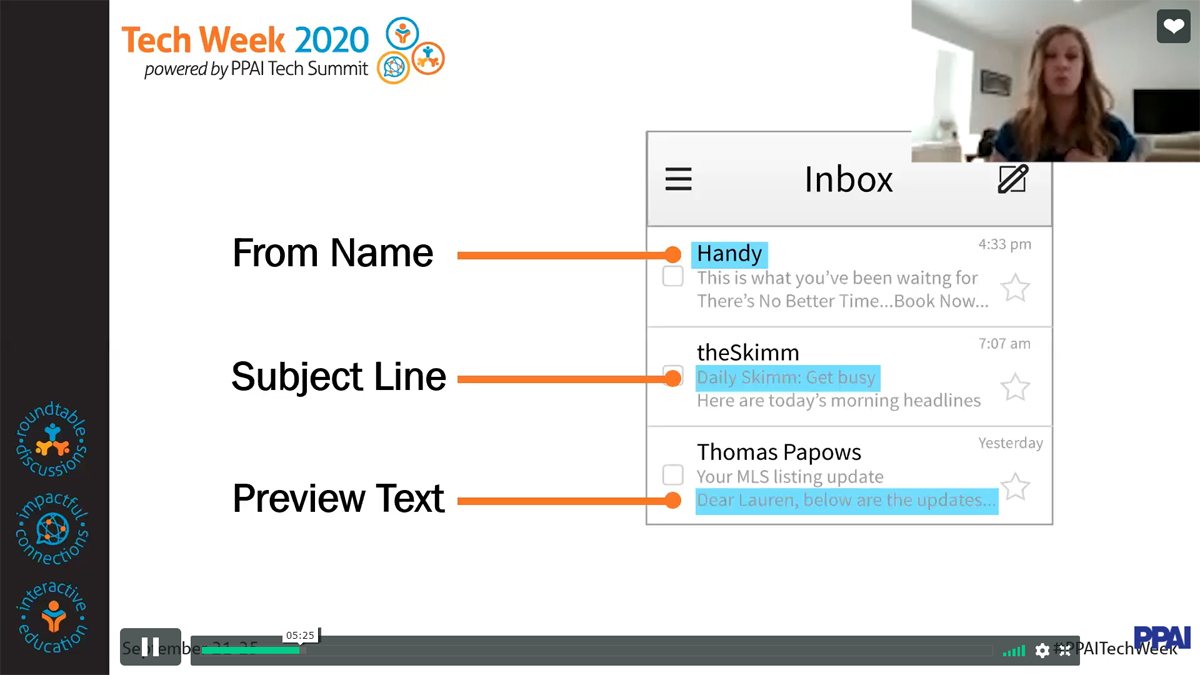Tech Week 2020 Continues With Extensive Education Line-Up
Tech Week 2020, powered by PPAI Tech Summit, runs through Friday, delivering an extensive range of education sessions presented by experts from inside and outside the industry to promotional products businesses’ IT leaders and professionals. This week, Tech Week’s diverse line-up has included a discussion on the unprecedented times information technology professionals find themselves in and an examination of email marketing, along with an extensive roster of other relevant subjects.
In the Tuesday afternoon session, “Leading in Turbulent Times in the IT World,” Jeff Tobe, certified professional speaker and author of Coloring Outside the Lines, discussed how fear-inducing times can present opportunities for professionals to experience more authentic learning and connections. Tobe, who has experience working on both the supplier and distributor sides of the promotional products industry, explained that to function most effectively as a leader comes down to a delicate balance of tasks and relationships.
“Generally, what you do for a living is focused on tasks. It’s really not focused on relationships,” he said. “But as we enter these crazy times—we’re talking about working remotely and social distancing—we have to talk about relationships as well.”
Tobe explained that there are four relationship styles, one of which is most ideal. The most effective relationship style, and what leaders strive for, is high task, high relationship. On the opposite spectrum is low task, low relationship, and in the middle are low task, high relationship, and high task, low relationship.
To best navigate these crucial relationships, Tobe shared five steps for being a great leader—and a great communicator—during turbulent times. The first, he said, is to always remember the four “C’s”—be clear, consistent, confident and concise. The second is to always accept there is more than one right answer to any challenge that a customer, client or partner might have. This includes being mindful not only of “external” customers, he said, but internal customers, which are those people whose responsibilities help you to better perform your job. To hone this point, Tobe discussed the Harvey Principle—something he developed that was inspired from Harvey, a movie where the main character sees a life-size rabbit that no one else can see, and a concept he explains in his book. From this, he said, it’s about “learning to see invisible opportunities where everyone else says it can’t be done.” This is something that is the opposite of internal myopia, which Tobe described as “when we become so focused on the challenges we’re facing internally that we’re not willing to step back and look at the bigger picture.”
The third step Tobe described is being a relationship manager, not a task manager. The fourth is to stay positive throughout, and the last is to engage people at a different level—to take those critical relationships and explore new opportunities and navigate challenges in a way that’s innovative, collaborative, and offers the greatest benefit to all.
Bille Forman, director of marketing at SAGE, got Wednesday’s programming started with her session on effective email marketing. In the U.S., businesses see a 4,300-percent ROI from email marketing, making it one of the most cost-effective marketing strategies for small businesses. During the session, “Are Your Email Campaigns Working?,” Forman explained how to calculate and improve the numbers for a successful email campaign.
Email marketing is an opportunity to get in front of customers on a regular basis, especially in the COVID-19 era. Forman said there are four numbers that marketers should use to determine the success of the campaign: email open rate, email click-through rate, email unsubscribe rate and email bounce back rate.
The email open rate is the total number of times a message has been opened. This number tells marketers how effective the from name, subject line and preview text is in getting people to open the email. The open rate can be calculated by the amount of emails opened divided by the number of emails sent that didn’t bounce back. Forman says a good benchmark for open rates is 17.8 percent, but this number can vary from industry to industry. The open rate can be improved by a better subject line. Sixty-nine percent of people judge an email as spam depending on the subject line, she said andtesting different send times, days and cadence can help improve the overall open rate success.
The email click-through rate is the total number of times someone clicks on a link in an email. The number can be determined by dividing the total number of clicks by the number of emails delivered minus those that bounced back. Forman says 2.6 percent is a good benchmark to follow, and it can be improved by segmenting your audience with content better tailored to those groups, improving the call to action, making them short and sweet, and giving people a strong incentive to click.
Forman says the email unsubscribe rate is the number that tells you most directly that there is something wrong with your email campaign. The unsubscribe rate is the percent of subscribers who have chosen to no longer receive your messages. A good benchmark is .1 percent and can be determined by dividing the number of unsubscribers by the amount of delivered emails. Marketers can improve this number by having a healthy email list of subscribers from the start, making messages more relevant and valuable, segmenting the audience and reevaluating email frequency. In the U.S., under the CAN-SPAM Act of 2003, email campaigns must have the option to unsubscribe or opt-out. Companies have 10 business days to comply with opt-out requests. In the EU and Canada, marketers can only send messages to consumers who have explicitly chosen to opt-in as opposed to in the U.S., where you can send messaging to anyone if you provide the option to opt-out.
Lastly, the email bounce back rate can be determined by dividing undelivered messages by total mail sent. Forman says a good benchmark to have is .7 percent, and if your bounce back rate is higher than two percent, you have a problem. However, there is a difference between soft bounces, temporary delivery failures because of things like full mailboxes, and hard bounces, which are permanent delivery failures because of outdated email addresses. Keeping your bounce back rate low will keep your emails from being flagged as spam and getting placed on blacklists, she said.
Forman advised attendees to choose the right email marketing service that will enable them to create highly engaging emails, manage contact lists, segment groups and track performance. With a huge impact on the overall marketing success of the company, email campaigns must deliver.
PPAI’s Tech Week continues on Friday with two more sessions starting at 11 am CT. Find details here.


